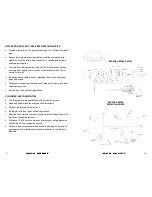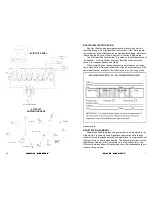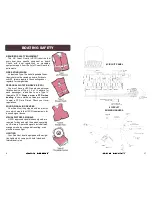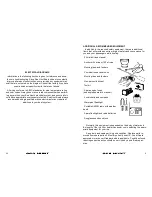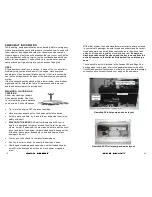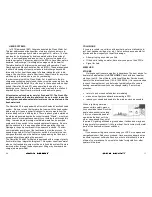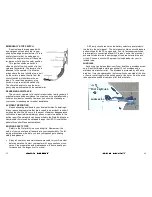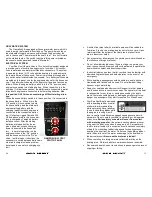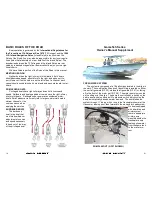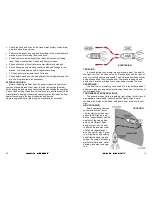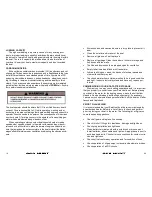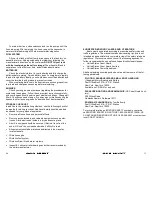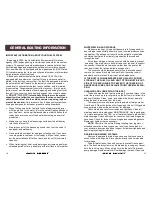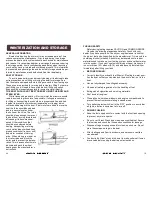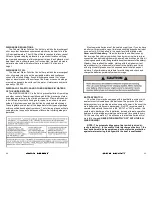
20
DISCHARGE REGULATIONS
The Federal Water Pollution Control Act prohibits the discharge of
oil or any other hazardous substances which may be harmful into the
U.S. navigable waters. The US Coast Guard requires that any vessel
26 feet or greater display a placard in a prominent location notifying
the crew and passengers of discharge restrictions. Each placard must
be at least nine inches wide and four inches high, made of a durable
material and printed with letters that are at least 1/8 of an inch in
height.
DISCHARGE OF OIL
The Federal Water Pollution Control Act prohibits the discharge of
oil or oily waste into or upon the navigable waters and contiguous
zones of the United States, if such discharge causes a film, sheen
upon, or discoloration of the surface of the water or causes a sludge
or emulsion beneath the surface of the water. Violators are subject to
a penalty of $5,000.
DISPOSAL OF PLASTICS AND OTHER GARBAGE IN WATERS
OF THE UNITED STATES
The MARPOL ANNEX V is the Act to prevent pollution from ships
and other vessels. Federal regulations prohibit the discharge of plas-
tic garbage anywhere in the marine environment. Plastic includes but
is not limited to: synthetic fishing nets, ropes, lines, straws, six pack
holders, Styrofoam cups and lids, bottles, buckets and plastic bags.
These regulations also restrict the disposal of other types of garbage
within specified boundaries from shore. The following plaque will help
you determine the specific distances offshore that certain garbage is
permitted.
45
Most newer batteries are of the sealed or gel type. If you do have
a battery with removable caps, fluid levels should be checked at least
once a month. Fill the battery to the upper level with distilled water.
Never overfill the battery.
Clean the terminals on all batteries by
first turning off any battery switches, then by removing the terminal
connections and scrubbing them with a small wire brush and a little bit
of baking soda and water (being careful to keep the mixture out of the battery).
Wipe dry, then reattach the cables, starting with the highest current
draw conductor (i.e. starter cable) closest to the battery, and finish
with a light coat of grease over the exposed metal to help keep out
moisture. Follow this same procedure for winterizing, and check and
charge the batteries periodically when in storage.
BATTERY SWITCH
Your Sea Hunt may be equipped with a dual battery system, with
a selector switch located near the batteries. The purpose of a dual
battery system is to provide a backup source of power in the event the
main battery should become discharged. It is NOT recommended to
operate the boat with the switch in the “BOTH” or “ALL” position– this
could lead to discharge of both batteries. Instead, alternate operation
between the two at approximately equal intervals (for example, every
10-15 hours of operation). This will ensure that both batteries will re-
main fully charged.
NEVER TURN SWITCH “OFF” WITH THE EN-
GINE RUNNING!
NOTE– The automatic bilge pump float switch is wired di-
rectly to battery 1. In the event of total discharge of battery 1, the
float switch would be inoperable and will not provide protection
against water entering the bilge while the boat is unattended.

